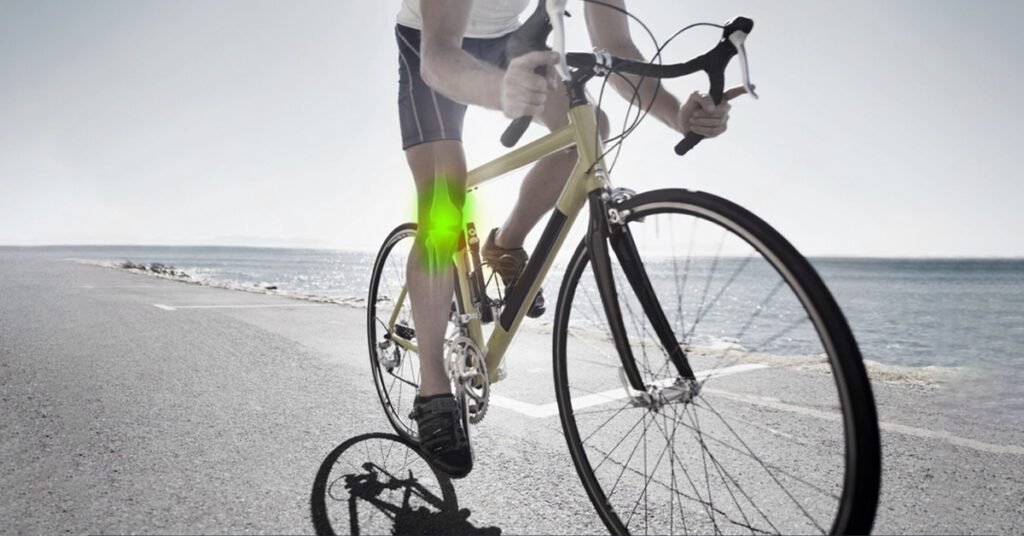Is Cycling Good for Knee Joint Pain?
Knee pain is common and can make it hard to stay active. Many people look for exercises that are easy on the joints, and cycling is often recommended. But is cycling really good for knee pain? Let’s find out.
Why Cycling is Good for Your Knees
1. Gentle on Joints
Cycling is a low-impact exercise, meaning it doesn’t put much pressure on your knees like running does. This makes it a good choice for people with knee pain or arthritis.
2. Strengthens Leg Muscles
When you cycle, you use muscles like your thighs and calves. Stronger muscles help support your knees, reducing pain and making movement easier.
3. Keeps Your Knees Moving
Cycling helps your joints stay flexible by keeping them moving. It also increases the natural fluid in your knees, which helps reduce stiffness and pain.
4. Helps with Weight Control
Extra weight can put more pressure on your knees, making pain worse. Cycling is a great way to burn calories and stay fit, which can help reduce knee pain.
5. Improves Blood Flow
Good blood flow helps your knees heal and stay healthy. Cycling increases circulation, bringing more oxygen and nutrients to your joints.
How to Cycle Safely with Knee Pain
1. Set Up Your Bike Correctly
- Make sure your seat is at the right height so your knees don’t bend too much.
- Adjust the handlebars to a comfortable position.
- Use a bike with a soft seat to avoid extra pressure on your joints.
2. Start Slow
If you’re new to cycling or have knee pain, begin with short rides at a slow pace. Slowly increase your time and speed to avoid stress on your knees.
3. Choose Smooth Paths
Flat roads or indoor cycling are better than rough or hilly roads. Uneven paths can put extra pressure on your knees.
4. Wear Comfortable Shoes
Good shoes help absorb shock and keep your knees safe. Choose well-padded cycling shoes for extra support.
5. Pay Attention to Your Body
If cycling makes your knees hurt, stop and rest. If pain continues, see a doctor or physiotherapist for advice.
When to Avoid Cycling
For most people, cycling is safe and helpful. But in some cases, it may not be the best choice. Avoid cycling if you have:
- Severe arthritis that makes movement very painful
- A recent knee injury or surgery
- A knee condition that causes weakness or instability
Always check with a doctor before starting cycling if you have serious knee issues.



Cycling is an excellent low-impact exercise that strengthens muscles and supports knee health. It improves flexibility and reduces stiffness by increasing natural joint fluid. Maintaining a healthy weight through cycling reduces pressure on the knees and minimizes pain. Proper gear, like padded shoes, and gradual progression are key to safe cycling. Should individuals with chronic knee conditions consult a specialist before starting cycling? Given the growing economic instability due to the events in the Middle East, many businesses are looking for guaranteed fast and secure payment solutions. Recently, I came across LiberSave (LS) — they promise instant bank transfers with no chargebacks or card verification. It says integration takes 5 minutes and is already being tested in Israel and the UAE. Has anyone actually checked how this works in crisis conditions?
Cycling is a fantastic way to strengthen your muscles and improve joint flexibility. It’s especially beneficial for reducing knee pain by increasing blood flow and natural joint fluid. Starting with short, slow rides can help beginners avoid unnecessary stress on their knees. Wearing proper cycling shoes is also crucial for knee protection. Have you considered how cycling could fit into your daily routine for better knee health? German news in Russian (новости Германии)— quirky, bold, and hypnotically captivating. Like a telegram from a parallel Europe. Care to take a peek?
**mind vault**
mind vault is a premium cognitive support formula created for adults 45+. It’s thoughtfully designed to help maintain clear thinking
**breathe**
breathe is a plant-powered tincture crafted to promote lung performance and enhance your breathing quality.